Do you need auto insurance
before you buy your car?
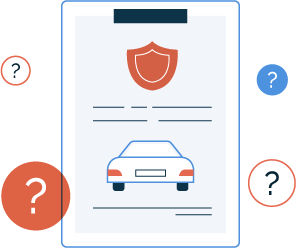
A Concise Overview
- You should have auto insurance on any vehicle you buy before you can drive it off the lot
- Most lenders require that you keep full coverage on the vehicle for the duration of your loan
- If you don’t keep full coverage on the car until you pay it off, the lender can purchase costly force-placed insurance and bill you for it
When do you buy insurance for a new car? Do you need car insurance to buy your car? Can you insure a car you don’t own yet?
If you don’t already have auto insurance, the world of car insurance can seem a bit confusing.
Even if you’ve been dealing with auto insurance for years, the entire process can still seem and feel frustrating and even overwhelming. Knowing what auto insurance coverages you need and getting the best rates are different things. Do you need temporary car insurance? Or should you purchase a more long-term full coverage policy?
You may be asking questions like these, as well as dozens of others. Not all of the mystery can be taken out of the equation when answering your auto insurance policy questions, but you can hopefully make some sense of the questions you need to answer.
Let’s talk more about buying a car without insurance, what to expect, and what you must do.
If you’re interested in insuring a car before buying it, we can help you find the right insurance product and even the right insurance provider. Enter your ZIP code in our free tool to get quotes from multiple insurers and get affordable insurance when you buy your car or after you’ve already purchased it. Keep reading to learn how to get car insurance before buying a car.
Read More: The Hartford Auto Insurance
Do you need auto insurance to drive your new car off the lot?
Do you need insurance to buy a car? Can you drive a car off the lot without insurance? Can you get car insurance before you buy a vehicle? How do you get car insurance without a car?
The truth is it can depend on the situation. The key is to realize that if you’re walking onto a car lot and getting your very first car and have never had an insurance policy, you will need to get auto insurance first.
There are some very simple steps to follow to have your auto insurance in place before you buy your car:
1. Decide on the car you want
2. Get as much information about the car, including the VIN, as possible. If there are a few that you are interested in, contact the dealer to get the basic information for each car
3. Get quotes from several companies to compare to find the best price for the coverage you need
4. Select the company you want to go with. You can contact them to get a policy set up, and you can either go ahead and activate the coverage if you know which car you want or call them once you make that decision at the dealership
Can you buy a car without insurance? Most lenders will require full coverage auto insurance if you’re getting a loan for a vehicle.
Do you need proof of insurance to buy a car, or can you buy a car without insurance? Do dealerships require proof of insurance? The short answer is yes. You do need insurance when you buy a vehicle, and dealerships will request proof of your coverage.
But why do car dealers need proof of insurance? You need proof of insurance before buying a car to protect the lender, especially if you are getting your loan from the car dealership itself.
So, now you may be wondering about buying car insurance before buying a car. How do you get insurance before you buy a vehicle? Let’s learn more.
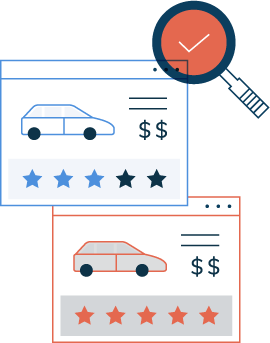
How can you get auto insurance before buying a car?
It’s actually quite easy to get your auto insurance in place before you buy your car.
- You have a few options before buying that car and driving off the lot. You may want to browse the car lots and get some ideas about the cars you are interested in and do some figuring in your spare time.
- Usually, you would find a handy online site (like this one) and use your ZIP code and the data about your potential new car choices to get an idea of what your auto insurance rates might look like.

This can be a handy tool because too many drivers don’t get an idea of what their insurance might cost until too late, only to find out that flashy new convertible’s monthly car insurance rates could be as much as the car loan payment.
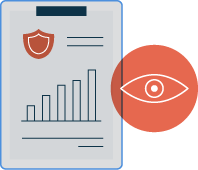
You can also usually check on auto insurance rates while at the dealership. If you plan on doing this, it’s a good idea to allow yourself enough time to browse cars and possible insurance rates. The dealership should allow you access to the internet to shop for auto insurance quotes and secure a policy online to get your car.
How long do you have to get auto insurance when buying a car?
When buying a new car, when do I need insurance? Do I get insurance before buying a vehicle or when the purchase is complete? If you don’t already have auto insurance coverage, you will need a policy before you can finish the deal. The bottom line is you usually need to have proof of insurance sent over to satisfy the lender before you can drive off the lot with your new vehicle. For a rental car, that would depend on the rental company whether they insure their vehicles or not.

However, if you already have an auto insurance policy on your current vehicle, you may be able to use this to at least drive off the lot (this applies whether you’re trading in a vehicle as a part of your purchase or not). From there, you will have to make immediate changes to make sure your new car is insured for regular driving and use.
You should be able to transfer your old policy to your new car, but the cost may be different. If you go from an older car to a new sports car, even your old policy will cost more.
Some insurance companies allow a five-day or even 30-day grace period for a new car purchase. However, whenever possible, it’s a good idea to purchase coverage for your new car before you get it.
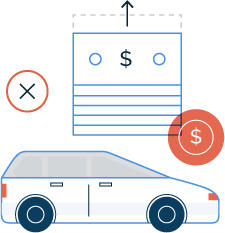
- This helps protect you but also helps you avoid rate surprises. If you are a young driver around 18 years old, have problems with your driving record, or are considered a high-risk driver for some other reason, you could be quite shocked by your potential coverage rates.
- If you don’t bother to find out ahead of time how much those rates can be, you could end up spending most of your monthly income on your car loan and insurance rates.
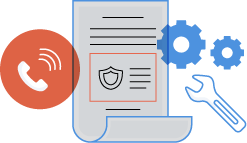
- You can usually call and adjust your current policy from the dealership to cover the car until you get home. From there, you can shop around for and buy auto insurance coverage for your new vehicle.
How do you get auto insurance without a car?
Can I insure a car I don’t own?
If you have a current policy, it should cover you until you can contact your agent with the information about your new car. The insurance company will need to know the make, model, and year to add the vehicle to your policy.
If you’ve never had car insurance before, you still have options. You can contact an insurance company that sells temporary auto insurance and purchase a policy for just a few days. That will give you time to search for the standard auto insurance company you would like to use.
You can also go ahead and get quotes for car insurance using only your personal information, like age, gender, driver’s history, credit history, and location. This quote won’t be complete, but it will give you a good idea of your rates.
When you decide on your vehicle, you can call your insurance company with the information and get your policy.
Can you get auto insurance on the same day?
Yes, it’s possible to get car insurance in one day. You will need to have all of your information ready to give to your agent. Most insurance companies can have your policy complete within the day. It can make your day hectic, though. If you have time, it will be less stressful to have your auto insurance in place before the day you need it.
Read more: Buying One-Day Auto Insurance: What You Need To Know in 2023
You will also need to know the type of coverage you need. If you are financing your vehicle, the lender will most likely require you to have full coverage auto insurance.
What are the rates for full coverage auto insurance?
Auto insurance isn’t one size fits all, so think twice before getting cheap car insurance. You will need to determine the right car insurance coverage for you.
Most lenders will require you to carry full coverage auto insurance to protect your investment fully.
The full insurance coverage includes liability insurance, collision coverage, and comprehensive coverages. This will provide financial protection to you (and the lender) from an accident or other damages, such as fire or theft.
Check out this table to get an idea of the average annual rate for full coverage insurance. You can also compare this rate to other levels of coverage to see the price difference.
| Insurance Companies | Average Annual Rates for Low Coverage | Average Annual Rates for Medium Coverage | Average Annual Rates for High Coverage |
|---|---|---|---|
| Allstate | $4,628.03 | $4,896.81 | $5,139.02 |
| American Family | $3,368.49 | $3,544.37 | $3,416.40 |
| Farmers | $3,922.47 | $4,166.22 | $4,494.13 |
| Geico | $3,001.91 | $3,213.97 | $3,429.14 |
| Liberty Mutual | $5,805.75 | $6,058.57 | $6,356.04 |
| Nationwide | $3,394.83 | $3,449.80 | $3,505.37 |
| Progressive | $3,737.13 | $4,018.46 | $4,350.96 |
| State Farm | $3,055.40 | $3,269.80 | $3,454.80 |
| Travelers | $4,223.63 | $4,462.02 | $4,619.07 |
| USAA | $2,404.11 | $2,539.87 | $2,667.92 |
Full coverage auto insurance averages $345 a month but will give you peace of mind that your new car is fully protected.
What if these auto insurance rates are higher than you can afford?
First of all, if you are concerned about your rates potentially being steep because of your lack of driving experience, checkered driving, insurance past, or the type of vehicle you are financing, you must shop for auto insurance before you sign on the dotted line and lock yourself into the new car payment.
If you call your current car insurance policy provider and don’t like the quotes you get, keep a few things in mind:
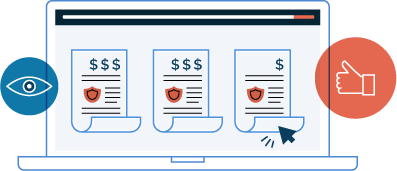
- It may just be your current car insurance policy provider. By looking to buy car insurance online, you can browse plenty of competitive quotes for auto insurance rates.
- This is the best way to ensure that you get the cheapest and most affordable rates possible. You may even be able to get no down payment car insurance.
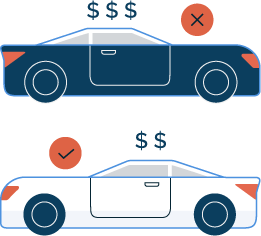
- If the general costs from the quotes you get are still too high, you may need to reconsider your automobile choice. The flashier, faster, and sportier the car, the higher your insurance rates are bound to be. See if there is any difference in a different trim level for the same vehicle. Or try a slightly watered-down and less sporty version of this model.

You may even find that the rates could differ based on safety ratings between two different cars from different manufacturers.
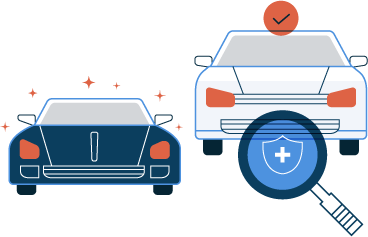
- Finally, try to opt for safety features rather than fancy add-ons. The extra side air bags instead of the sunroof could make a huge difference in your auto insurance rates. Not to mention the sticker price may be lower as well.
- If there is a particular car you have your heart set on, the trick is to make sure you find the safest and least flashy version possible to help reduce the risk (and the auto insurance rates).
Keep in mind that the dealership may have a policy provider they recommend, but they often arrange to get referral fees. Always check by shopping around for rates yourself instead of assuming their policy provider will be the most affordable.
If you aren’t sure which company you want to go with, you could also look into temporary car insurance while you decide.
What are ways to save on auto insurance (whether you’re buying a car or not)?
We already discussed ways to save, including shopping for insurance, finding a vehicle with safety features, and purchasing a car that is perceived as lower-risk by insurance companies. Another tip is to look for discounts. There are a variety of discounts offered by all the major insurance companies, and chances are, you’ll qualify for some of them. Take a look at this table for some examples.
| Discount Name | Allstate | American Family | Farmers | Geico | Liberty Mutual | Nationwide | Progressive | State Farm | Travelers | USAA |
|---|---|---|---|---|---|---|---|---|---|---|
| Adaptive Cruise Control | ✓ | ✓ | ✓ | ✓ | 5% | ✓ | ✓ | ✓ | ✓ | ✓ |
| Adaptive Headlights | ✓ | ✓ | ✓ | ✓ | 5% | ✓ | ✓ | ✓ | ✓ | ✓ |
| Anti-lock Brakes | 10% | ✓ | ✓ | 5% | 5% | 5% | ✓ | 5% | ||
| Anti-Theft | 10% | ✓ | 23% | 20% | 25% | ✓ | 15% | |||
| Claim Free | 35% | ✓ | ✓ | 26% | ✓ | 10% | ✓ | 15% | 23% | 12% |
| Continuous Coverage | ✓ | ✓ | ✓ | ✓ | ✓ | ✓ | 15% | ✓ | ||
| Daytime Running Lights | 2% | ✓ | 3% | 5% | 5% | ✓ | ✓ | |||
| Defensive Driver | 10% | 10% | ✓ | ✓ | 10% | 5% | 10% | 5% | 10% | 3% |
| Distant Student | 35% | ✓ | ✓ | ✓ | ✓ | 10% | ✓ | 7% | ||
| Driver's Ed | 10% | ✓ | ✓ | ✓ | 10% | ✓ | 10% | 15% | 8% | 3% |
| Driving Device/App | 20% | 40% | ✓ | ✓ | 30% | 40% | 20% | 50% | 30% | 5% |
| Early Signing | 10% | ✓ | ✓ | ✓ | ✓ | 8% | ✓ | ✓ | 10% | 12% |
| Electronic Stability Control | 2% | ✓ | ✓ | ✓ | 5% | ✓ | ✓ | ✓ | ✓ | |
| Emergency Deployment | ✓ | ✓ | ✓ | 25% | ✓ | ✓ | ✓ | ✓ | ✓ | |
| Engaged Couple | ✓ | ✓ | ✓ | ✓ | ✓ | ✓ | ✓ | ✓ | ✓ | ✓ |
| Family Legacy | ✓ | ✓ | ✓ | ✓ | ✓ | ✓ | ✓ | ✓ | ✓ | 10% |
| Family Plan | ✓ | ✓ | ✓ | ✓ | ✓ | 25% | ✓ | ✓ | ✓ | ✓ |
| Farm Vehicle | 10% | ✓ | ✓ | ✓ | ✓ | ✓ | ✓ | ✓ | ||
| Fast 5 | ✓ | ✓ | ✓ | ✓ | ✓ | ✓ | ✓ | ✓ | ✓ | ✓ |
| Federal Employee | ✓ | ✓ | 12% | 10% | ✓ | ✓ | ✓ | ✓ | ||
| Forward Collision Warning | ✓ | ✓ | ✓ | ✓ | 5% | ✓ | ✓ | ✓ | ✓ | |
| Full Payment | 10% | ✓ | ✓ | $50 | ✓ | ✓ | ✓ | 8% | ✓ | |
| Further Education | ✓ | ✓ | 10% | 15% | ✓ | ✓ | ||||
| Garaging/Storing | ✓ | ✓ | ✓ | ✓ | ✓ | ✓ | ✓ | 90% | ||
| Good Credit | ✓ | ✓ | ✓ | ✓ | ✓ | ✓ | ||||
| Good Student | 20% | ✓ | 15% | 23% | 10% | ✓ | 25% | 8% | 3% | |
| Green Vehicle | 10% | ✓ | 5% | ✓ | 10% | ✓ | ✓ | ✓ | 10% | ✓ |
| Homeowner | ✓ | ✓ | ✓ | ✓ | 5% | ✓ | 3% | 5% | ✓ | |
| Lane Departure Warning | ✓ | ✓ | ✓ | ✓ | ✓ | ✓ | ✓ | ✓ | ✓ | |
| Life Insurance | ✓ | ✓ | ✓ | ✓ | ✓ | ✓ | ✓ | ✓ | ✓ | ✓ |
| Low Mileage | ✓ | ✓ | ✓ | 30% | ||||||
| Loyalty | ✓ | ✓ | ✓ | ✓ | ✓ | 5% | ✓ | ✓ | ✓ | |
| Married | ✓ | ✓ | ✓ | ✓ | ✓ | ✓ | ||||
| Membership/Group | ✓ | ✓ | ✓ | 10% | 7% | ✓ | ✓ | |||
| Military | ✓ | ✓ | 15% | 4% | ✓ | ✓ | ||||
| Military Garaging | ✓ | ✓ | ✓ | ✓ | ✓ | ✓ | ✓ | ✓ | ✓ | 15% |
| Multiple Drivers | ✓ | ✓ | ✓ | ✓ | ✓ | ✓ | ✓ | ✓ | ✓ | ✓ |
| Multiple Policies | 10% | 29% | ✓ | 10% | 20% | 10% | 12% | 17% | 13% | |
| Multiple Vehicles | ✓ | ✓ | 25% | 10% | 20% | 10% | 20% | 8% | ||
| New Address | ✓ | ✓ | ✓ | ✓ | 5% | ✓ | ✓ | ✓ | ✓ | ✓ |
| New Customer/New Plan | ✓ | ✓ | ✓ | ✓ | ✓ | ✓ | ✓ | ✓ | ✓ | |
| New Graduate | ✓ | ✓ | ✓ | ✓ | 5% | ✓ | ✓ | ✓ | ✓ | ✓ |
| New Vehicle | 30% | ✓ | ✓ | 15% | ✓ | 40% | 10% | 12% | ||
| Newly Licensed | ✓ | ✓ | ✓ | ✓ | 5% | ✓ | ✓ | ✓ | ✓ | ✓ |
| Newlyweds | ✓ | ✓ | ✓ | ✓ | 5% | ✓ | ✓ | ✓ | ✓ | ✓ |
| Non-Smoker/Non-Drinker | ✓ | ✓ | ✓ | ✓ | ✓ | ✓ | ✓ | ✓ | ✓ | ✓ |
| Occasional Operator | ✓ | ✓ | ✓ | ✓ | ✓ | ✓ | ✓ | ✓ | ✓ | |
| Occupation | ✓ | 10% | 15% | ✓ | ✓ | ✓ | ||||
| On-Time Payments | 5% | ✓ | ✓ | ✓ | ✓ | ✓ | ✓ | 15% | ✓ | |
| Online Shopper | ✓ | ✓ | ✓ | ✓ | ✓ | ✓ | 7% | ✓ | ✓ | ✓ |
| Paperless Documents | 10% | ✓ | ✓ | ✓ | 5% | $50 | ✓ | ✓ | ✓ | |
| Paperless/Auto Billing | 5% | ✓ | ✓ | ✓ | $30 | ✓ | $20 | 3% | 3% | |
| Passive Restraint | 30% | 30% | 40% | 20% | ✓ | 40% | ||||
| Recent Retirees | ✓ | ✓ | ✓ | ✓ | 4% | ✓ | ✓ | ✓ | ✓ | ✓ |
| Renter | ✓ | ✓ | ✓ | ✓ | ✓ | ✓ | ✓ | ✓ | ✓ | ✓ |
| Roadside Assistance | ✓ | ✓ | ✓ | ✓ | ✓ | ✓ | ✓ | ✓ | ✓ | ✓ |
| Safe Driver | 45% | ✓ | 15% | ✓ | 35% | 31% | 15% | 23% | 12% | |
| Seat Belt Use | ✓ | ✓ | ✓ | 15% | ✓ | ✓ | ✓ | ✓ | ✓ | |
| Senior Driver | 10% | ✓ | ✓ | ✓ | ✓ | ✓ | ✓ | ✓ | ||
| Stable Residence | ✓ | ✓ | ✓ | ✓ | ✓ | ✓ | ✓ | ✓ | ✓ | |
| Students & Alumni | ✓ | ✓ | ✓ | 10% | 7% | ✓ | ✓ | ✓ | ||
| Switching Provider | ✓ | ✓ | 10% | ✓ | ✓ | ✓ | ✓ | |||
| Utility Vehicle | 15% | ✓ | ✓ | ✓ | ✓ | ✓ | ✓ | ✓ | ||
| Vehicle Recovery | 10% | ✓ | ✓ | 15% | 35% | 25% | ✓ | 5% | ||
| VIN Etching | ✓ | ✓ | ✓ | ✓ | 5% | ✓ | ✓ | |||
| Volunteer | ✓ | ✓ | ✓ | ✓ | ✓ | ✓ | ✓ | ✓ | ✓ | ✓ |
| Young Driver | ✓ | ✓ | ✓ | ✓ | ✓ | ✓ | ✓ | ✓ | $75 |
Speak to a licensed insurance agent to determine what discounts you may qualify for and how much those discounts can positively affect your rates.
Do you need insurance before you buy your car? The Bottom Line
Now that you’ve read our guide on insurance for a new vehicle, we’ll summarize.
Do you need car insurance to buy a car? Do you need insurance to buy a used car? If you’re looking to buy a vehicle (regardless of whether it’s new or used), you’ll need to look into getting insurance. If you already have a policy in place, you should have a grace period, typically just a few days, to get your new ride added to your policy.
How soon after buying a car do you need insurance? How long do you have to get insurance after buying a used car?
Normally, you’ll have between seven to 30 days to get car insurance coverage on your new — or new to you— vehicle.
Do you need insurance to drive? Yes, but you don’t need your auto insurance to drive someone else’s car, but only if you do it very occasionally.
If you find yourself driving someone else’s car frequently, you’ll need what’s called non-owner car insurance.
Ready to go car and auto insurance policy shopping? You can begin by entering your ZIP code to get the ball rolling so that you will have answers to your car insurance rate questions and know how to get insurance before you buy a car.
Frequently Asked Questions: Do you need insurance before you buy a car?
Still have a few questions? We’ve got more answers.
#1 – Do I need auto insurance before buying a used car?
Should I get car insurance before buying a used car? Just like with a new vehicle, you’ll need to keep full coverage until you successfully pay off the loan.
#2 – What do I need to provide to my agent to get auto insurance?
To get the most accurate auto insurance quote possible, you should give your agent information about your vehicle, including make, model, and year. You will also need to provide personal information, like your driver’s license number, to ensure your quote is accurate.
#3 – Do you need to keep full coverage on a financed vehicle?
Most lenders require you to keep full coverage for the entirety of your loan. After you’ve paid it off, you can choose to drop that to your state’s liability coverage limits. The Insurance Information Institute has compiled these requirements, as you can see in this table.
| State | Insurance required | Minimum liability limits |
|---|---|---|
| Alabama | BI & PD Liab | 25/50/25 |
| Alaska | BI & PD Liab | 50/100/25 |
| Arizona | BI & PD Liab | 15/30/10 |
| Arkansas | BI & PD Liab, PIP | 25/50/25 |
| California | BI & PD Liab | 15/30/5 |
| Colorado | BI & PD Liab | 25/50/15 |
| Connecticut | BI & PD Liab, UM, UIM | 25/50/20 |
| Delaware | BI & PD Liab, PIP | 25/50/10 |
| District of Columbia | BI & PD Liab, UM | 25/50/10 |
| Florida | PD Liab, PIP | 10/20/10 |
| Georgia | BI & PD Liab | 25/50/25 |
| Hawaii | BI & PD Liab, PIP | 20/40/10 |
| Idaho | BI & PD Liab | 25/50/15 |
| Illinois | BI & PD Liab, UM, UIM | 25/50/20 |
| Indiana | BI & PD Liab | 25/50/25 |
| Iowa | BI & PD Liab | 20/40/15 |
| Kansas | BI & PD Liab, PIP | 25/50/25 |
| Kentucky | BI & PD Liab, PIP, UM, UIM | 25/50/25 |
| Louisiana | BI & PD Liab | 15/30/25 |
| Maine | BI & PD Liab, UM, UIM, Medpay | 50/100/25 |
| Maryland | BI & PD Liab, PIP, UM, UIM | 30/60/15 |
| Massachusetts | BI & PD Liab, PIP | 20/40/5 |
| Michigan | BI & PD Liab, PIP | 20/40/10 |
| Minnesota | BI & PD Liab, PIP, UM, UIM | 30/60/10 |
| Mississippi | BI & PD Liab | 25/50/25 |
| Missouri | BI & PD Liab, UM | 25/50/25 |
| Montana | BI & PD Liab | 25/50/20 |
| Nebraska | BI & PD Liab, UM, UIM | 25/50/25 |
| Nevada | BI & PD Liab | 25/50/20 |
| New Hampshire | FR only | 25/50/25 |
| New Jersey | BI & PD Liab, PIP, UM, UIM | 15/30/5 |
| New Mexico | BI & PD Liab | 25/50/10 |
| New York | BI & PD Liab, PIP, UM, UIM | 25/50/10 |
| North Carolina | BI & PD Liab, UM, UIM | 30/60/25 |
| North Dakota | BI & PD Liab, PIP, UM, UIM | 25/50/25 |
| Ohio | BI & PD Liab | 25/50/25 |
| Oklahoma | BI & PD Liab | 25/50/25 |
| Oregon | BI & PD Liab, PIP, UM, UIM | 25/50/20 |
| Pennsylvania | BI & PD Liab, PIP | 15/30/5 |
| Rhode Island | BI & PD Liab | 25/50/25 |
| South Carolina | BI & PD Liab, UM, UIM | 25/50/25 |
| South Dakota | BI & PD Liab, UM, UIM | 25/50/25 |
| Tennessee | BI & PD Liab | 25/50/15 |
| Texas | BI & PD Liab, PIP | 30/60/25 |
| Utah | BI & PD Liab, PIP | 25/65/15 |
| Vermont | BI & PD Liab, UM, UIM | 25/50/10 |
| Virginia | BI & PD Liab, UM, UIM | 25/50/20 |
| Washington | BI & PD Liab | 25/50/10 |
| West Virginia | BI & PD Liab, UM, UIM | 25/50/25 |
| Wisconsin | BI & PD Liab, UM, Medpay | 25/50/10 |
| Wyoming | BI & PD Liab | 25/50/20 |
To better understand the information in the table, we’ve summarized the acronyms and abbreviations. Take a look.
| Abbreviation | Meaning |
|---|---|
| BI | Bodiliy Injury |
| PD | Property Damage Liability |
| PIP | Personal Injury Protection |
| UM | Uninsured Motorist |
| UIM | Underinsured Motorist |
While liability coverage will meet the minimum requirements set by your state, it may or may not be enough coverage for your situation.
If you do not keep full coverage on your vehicle, which is usually a lot more expensive than regular coverage and will be added to your bill.
You may also want to consider GAP insurance for a new car that is financed.
#4 – What are the top ways to save money on auto insurance?
The best way to save money on auto insurance is to shop around. Different companies will charge different rates for coverage. For example, one company may overlook that speeding ticket you got last year while another company will charge you a higher rate.
You should also ask what discounts are available to you. Multi-car, multi-policy, and safe drivers are a few of the most popular discounts. Bundling your insurance will save you even more money.
